From Concept to Commercialization:
The Medical Device
Development Playbook
a how-to guide for accelerating time-to-market

From Concept to Commercialization
Introduction
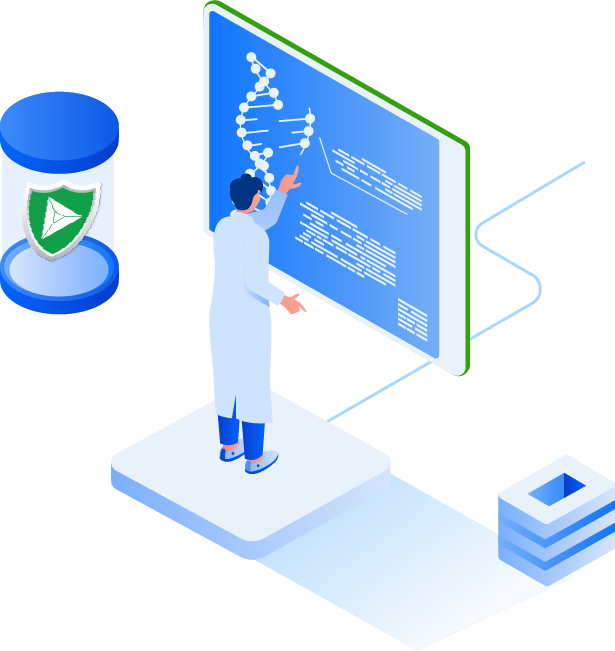
Although regulations and standards require medical device development to proceed through defined phases, medical device development is not a strictly linear process. When done correctly, it is a holistic process, converging at changing lives for a better world.
Once you’ve established the feasibility and marketability of your concept, subsequent phases in your investment work together to forge a clear path toward commercialization. In other words, your device’s use profile uniquely shapes its compliance parameters, design and development processes, go-to-market objectives, and end-of-life plans, concurrently.
The more complicated and sensitive the device, the more difficult and expensive it is to bring to market. It’s critical for design and development to be informed by vital considerations, including quality, testability, manufacturability, cybersecurity, regulatory, reimbursement, and marketability, as early as possible. Often, there simply isn’t time or money available for a second chance!
Where are you in the medtech development lifecycle? Have you considered what comes next? During design, research, and development, many medical device manufacturers do not fully consider critical late-stage factors like postmarket support or end-of-life, yet this is where our playbook begins.
This playbook serves as a complete guide (not a timeline!) of your device’s lifecycle. It’s your guide not only to getting medtech projects to market securely and successfully, but also to ensuring that your product remains secure and successful throughout its lifecycle.
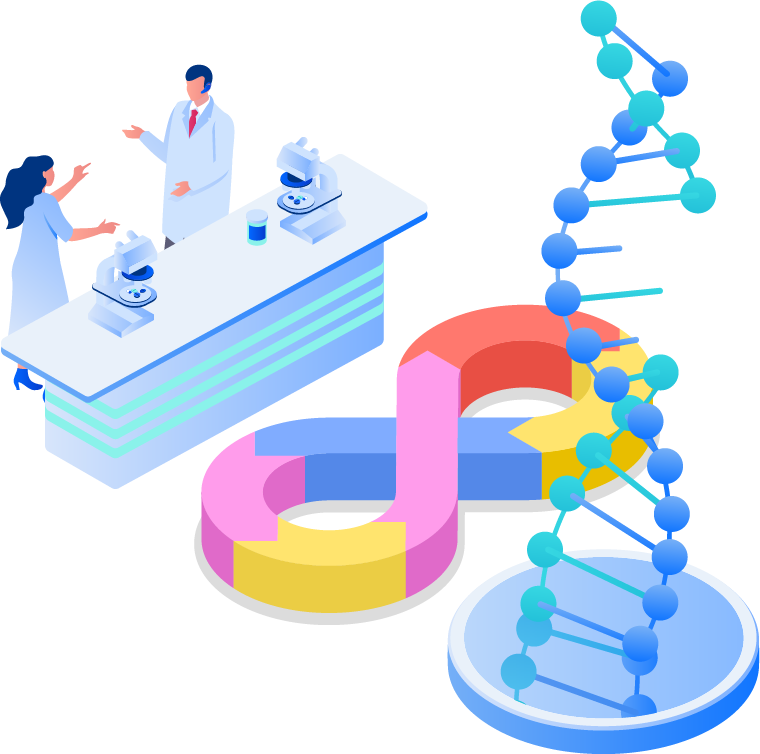
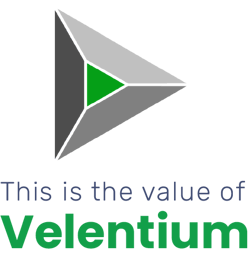
Velentium is a partnership you can trust to consider every stakeholder, provide holistic solutions from concept through end-of-support and beyond, ensure compliance and satisfy the most rigorous standards, all while balancing present timelines against future concerns.
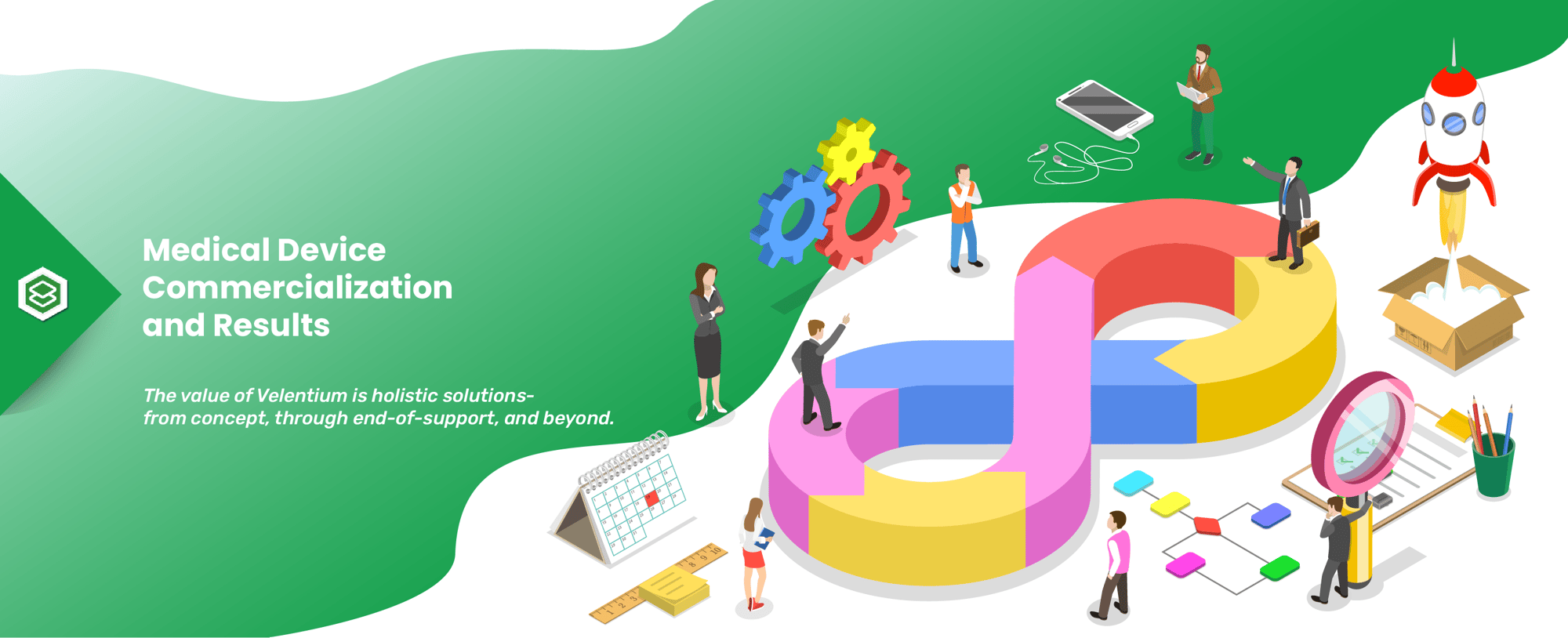
From Concept to Commercialization
Medical Device
Commercialization and Results
You might be thinking, “If this is a playbook, why are you starting with the results?”
We’re glad you asked.
Velentium does not begin with only the first steps in mind. The second we embark on our journey through your device’s lifecycle together, no matter the phase at which we enter the project or how long the scope of engagement is, Velentium is already considering crucial questions that can and will affect your device months and years into the future.
Postmarket Support
It is not uncommon for R&D firms and design engineers to scope projects as if they end at transfer to manufacturing. However, at this point, the device’s application has not even begun! Effective plans for mass production, surveillance, and support cannot be thrown together as production begins or ends.
By then, critical factors like cybersecurity, material efficacy, risks, and strategies for performing future software updates must already have been considered. Plans for this support must be robust, compliant, and proven prior to submission, and ready for full implementation immediately upon entry into the market. The medtech company that under-prepares stands in high risk of regulatory rejection.
According to the FDA, medical device surveillance within the postmarket support role includes
"The active, systematic, scientifically valid collection, analysis, and interpretation of data or other information about a marketed device. The data collected under a surveillance order help to address important public health questions on the safety and effectiveness of a device."
Velentium begins studying future software update needs and cybersecurity vulnerabilities as early as possible using the Cybersecure Development Lifecycle. By beginning with the end in mind, we identify and address future concerns through design vulnerability analysis, mitigation planning, and proactive testing of components and software. This ensures that your medical device not only meets regulatory standards for marketplace entry as well as customer expectations, but continues to meet those standards and expectations throughout its lifecycle.
This requires a thorough understanding of every component in the design. When Velentium identifies risks and vulnerabilities in the design and development phases, we can then plan for appropriate, application-driven, right-sized mitigations.
From a regulatory standpoint, postmarket surveillance includes considerations ranging from quality audits to ongoing risk analyses, to preventive action, and more. It also includes timely software updates, bug fixes, and corrective action when addressing the risk of patient harm. But it shouldn’t stop there!
Velentium also wants to help protect your business model. Our passion is to help you change lives for a better world, and you can’t do that unless your business is thriving. Preparing for late-stage challenges early in the development lifecycle keeps your project on track and your business model in the black.
By beginning with the end in mind, Velentium offers holistic medical device development with proven, best-practice solutions, so these challenges are addressed before issues arise.
Device End-of-Life
Technology advances at a rapid rate, which means that even the most cutting- edge medical device components will eventually face obsolescence or legacy status. It might seem irrelevant in the early phases, but planning for a medical device’s end-of-life strategy is a key consideration in product lifecycle management.
Even when designed for long-term efficiency and compliance, every medical device has an end to its lifecycle. A product may be considered at end-of-life when it is either deemed irreparable, its components are no longer available, or, after proper notice, the Manufacturer of Record no longer supports it.
Even then, used and refurbished devices are often sold in secondary markets worldwide. In this eventuality, medical devices and their manufacturers face a new set of challenges. Controlling for legal liabilities and exposures is one area of concern. So is controlling for business risk and intellectual property exposure.
When a medical device is in the research and feasibility phase, it’s difficult to predict which path it will take in its obsolescence. Proper planning with respect to all future possibilities is important, but often overlooked.
The value of Velentium is holistic solutions— from concept, through end-of-support, and beyond.
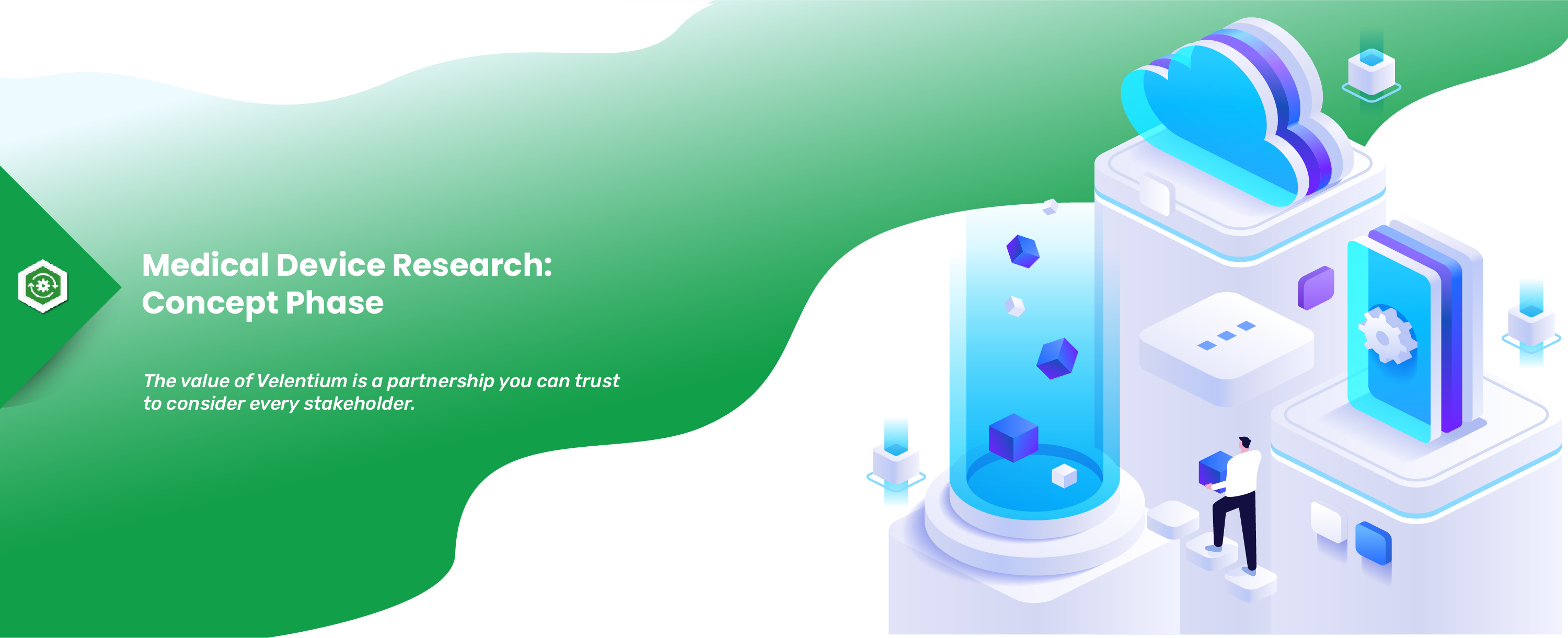
From Concept to Commercialization
Medical Device Research:
Concept Phase
Now that you’ve begun with the end in mind, you can embark on the journey through development with a more complete roadmap to success. Exploring the purpose of your concept allows you to introduce it safely and securely to its end users during and after development.
Keeping the End User in Mind
Keeping the end user in mind is a significant factor in medical device research, as the people for whom devices are developed are the ones whose lives will ultimately benefit from their innovation.
However, it’s critical to identify exactly who belongs in this category. The major end users are the people who come to mind first: Medical professionals who frequently interact with the device, and of course their patients, fall into this category.
Minor end users must also be considered. Depending on your project’s intended use, these users could include the surgeon who implants the device, clinicians who monitor or analyze data from the device, and technicians who set up and service the device. Identifying these users’ functional needs is the first phase in refining your concept.
Once you have identified all end users, you must consider exactly how your device will work in the context of their day-to-day activities. This includes factors such as the environment in which the device will be used, whether it is used constantly or intermittently, whether it is internally or externally placed, and its permanence. Each of these considerations carries its own list of requirements, so identifying vital elements at this stage sets the rest of the process up for success. Exploring the concept and practical use details and implications is standard practice in medical device research.
Beyond practical use, future software concerns must also be considered. Imagine that an implanted medical device with embedded software needs updating well after patient placement. This is a common situation, and regulators require that medical devices with embedded software be maintainable through updates. Several questions arise:
Is the device in constant use? How long will the device be unavailable while the software updates? What if something goes wrong while the update is being installed—what are the contingencies? What are the risks and vulnerabilities in worst-case scenarios, and how should they be addressed?
Keeping users in mind from the onset of device development, and mitigating such risks effectively and efficiently, can ultimately prove to be the difference between regulatory approval, delay, or denial—or even between patient life or death.
The value of Velentium is a partnership you can trust to consider every stakeholder.
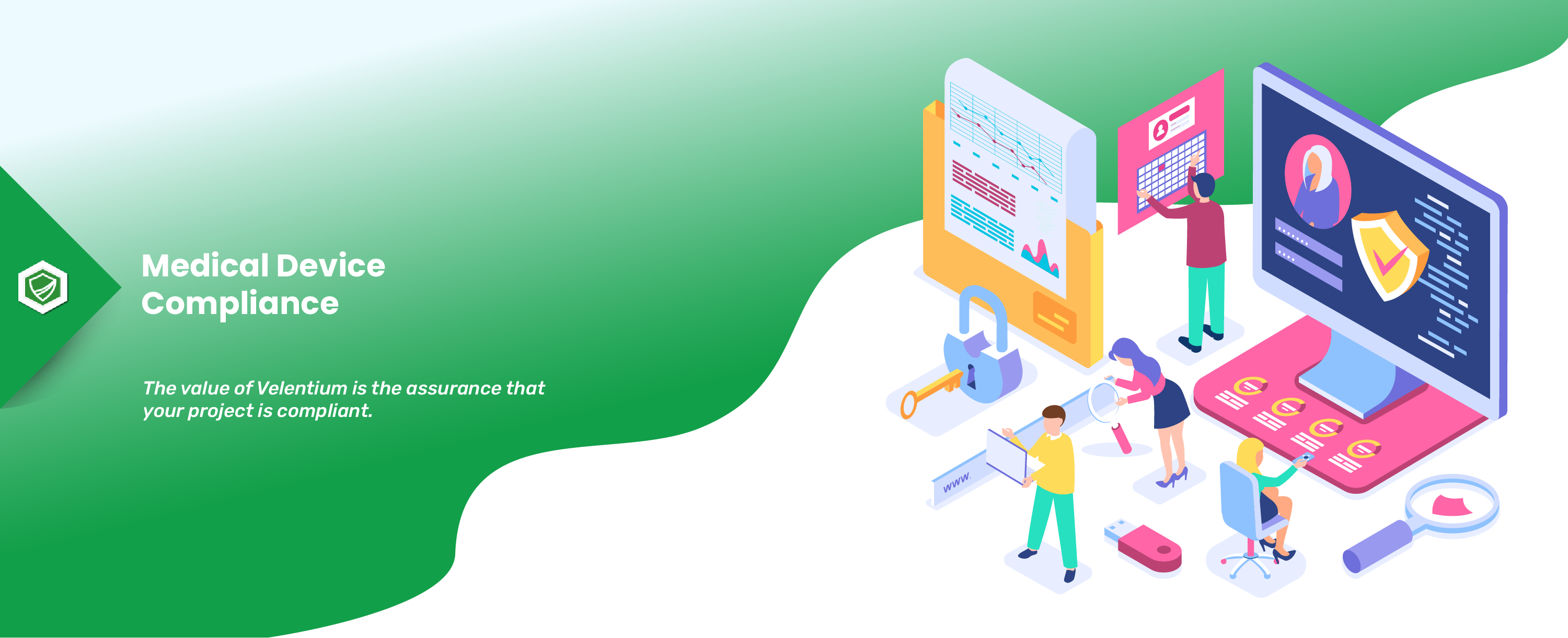
From Concept to Commercialization
Medical Device
Compliance
Throughout development and before medical testing can begin, regulatory submissions must be initiated to ensure your device is set up for success at every stage of its lifecycle.
The World Needs Your Concept
Medical device innovation is often a result of prior research, testing, necessity, or personal experience. Sometimes the future of medicine begins with a sketch on a diner napkin or is birthed through a science experiment. In any scenario, the path to medical device commercialization is lined with guardrails in the form of compliance and standards.
The process can be daunting. Developing in compliance might feel restrictive, but these guardrails exist to protect your project from going over a cliff.
Our SMEs follow regulations regarding Intended Use, Risk, Profiles, and even "Reasonably Foreseeable" misuse, to ensure that your investment safely reaches its destination and fulfills its ultimate purpose.
ISO 13485 Certified
Not only do we follow the standards - we helped write them!
Certified to: ISO 13485 – Quality Management Systems
Compliant with: ISO 14971 - Risk Management, IEC 62304 - Software, IEC 60601 - Electrical, IEC 62366 - Useability, ISO 14708 - Active Implantables, ISO 27001 - Information Security Management
Design Controls and Reviews
One of the guides to medical device compliance is a set of standards, procedures, and quality practices called Design Controls. These apply to all Class II and Class III medical devices and also include various Class I devices.
Title 21, Section 820.30 in the Code of Federal Regulations divides Design Controls into sections: Planning, input, output, review, verification, validation, transfer, and changes. These combine to shape a Design History File which is the last component of this subsystem. The DHF contains a comprehensive, official journal of your device’s progress and follows your project throughout every development phase.
The Design Controls subsystem ensures that current and future regulators, governing bodies, and stakeholders in your project are confident that your device does what you set out for it to do.
Your project can move into the testing phase when test protocols and plans have been submitted and meet all compliance standards.
The value of Velentium is the assurance that your project is compliant.
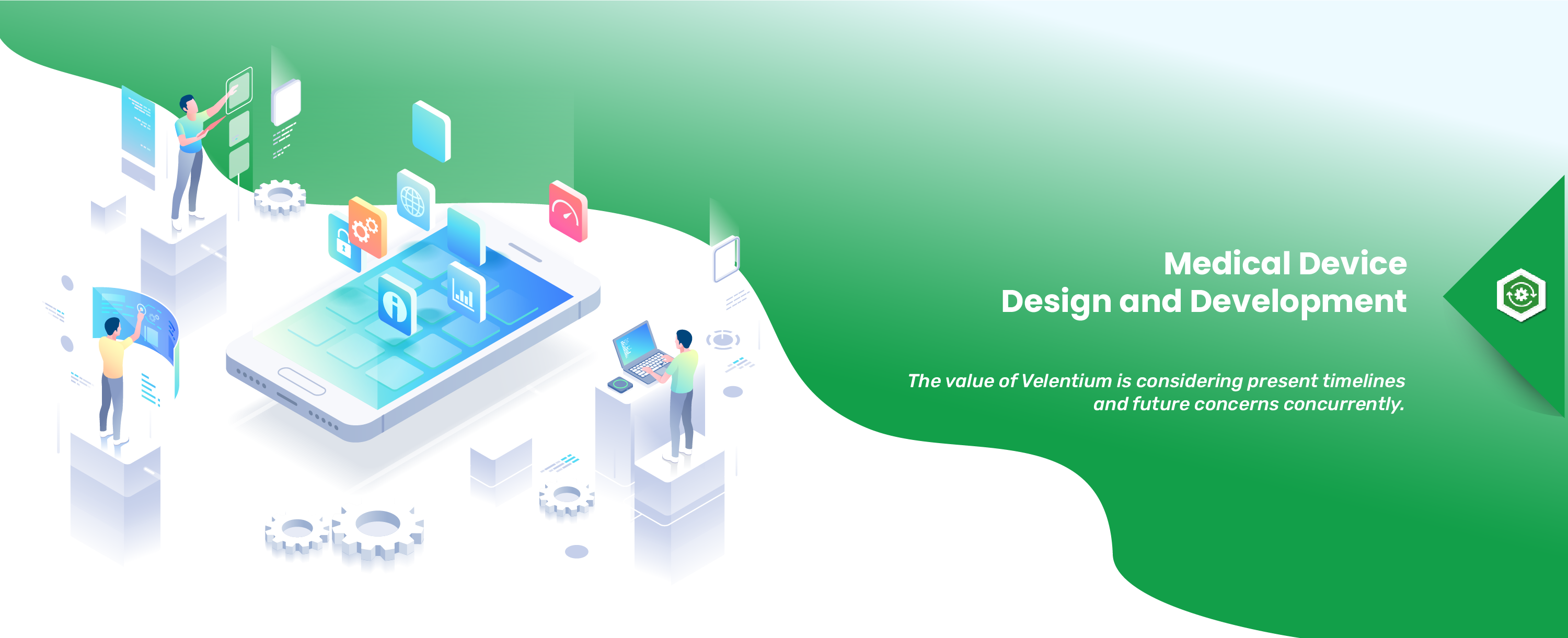
From Concept to Commercialization
Medical Device
Design and Development
Every phase in a medical device’s lifecycle either culminates in or flows from its design and development. This phase is the Grand Central Terminal of medtech, where research, requirements, cybersecurity, and compliance specifications come together to produce models and prototypes that move your concept forward.
Design for Testability
After your device is designed, the next step in development is testing… right? This approach may be status quo, but it is not nearly as efficient as factoring in the testability of your design from the beginning.
Designing for testability considers your device’s system components from project inception. It ensures that its functional requirements and design are appropriately worded and verifiable—i.e., measurable.
By designing elements in tandem, modules within the system can be tested interdependently. For instance, the purpose or function of one unit may contribute to the efficiency of another unit. Conversely, one component might render another unnecessary.
Testing units and modules throughout the design process also provides valuable, traceable data. It means your project doesn’t start at square one when entering its dedicated testing phase, which is helpful for your timeline (and your budget).
Design for Manufacturability
Designing for manufacturability means that our design engineers and production engineers work in tandem to create prototypes, draft and pilot mass production procedures, confirm component availability, design manufacturing lines, and develop manufacturing test station requirements.
Why this “early” focus on manufacturing? Velentium’s goal is to design and develop your concept while keeping your timeline and investment on track. Many medtech projects fail to consider production needs until the formal “Transfer to Manufacturing” phase, inevitably resulting in costly inefficiencies, delays, supply chain problems, and other avoidable challenges.
Implementation
It’s in the implementation phase that we put the information gathered through the concept and design phases into action. This is when the preliminary engineering and software questions raised in the previous phases come to life. Preliminary assessments are either confirmed or reconsidered as original ideas are executed and unforeseen hazards arise.
Our risk management team closely monitors Design Controls throughout this phase. Every change, tweak, and update necessitates adjustments to Design Controls, as each proposed change must be evaluated for potential impacts on usability, risks, vulnerability, manufacturability, and so on.
This is ideal timing! Implementation is the key phase in integrating design components like software, materials, and adherence to standards and constraints outlined in the project’s system and subsystem requirements. This is the time changes are most successfully suggested and developed, as iteration in this phase is expected and welcome in refining the functionality of your device.
The value of Velentium is considering present timelines
and future concerns concurrently.
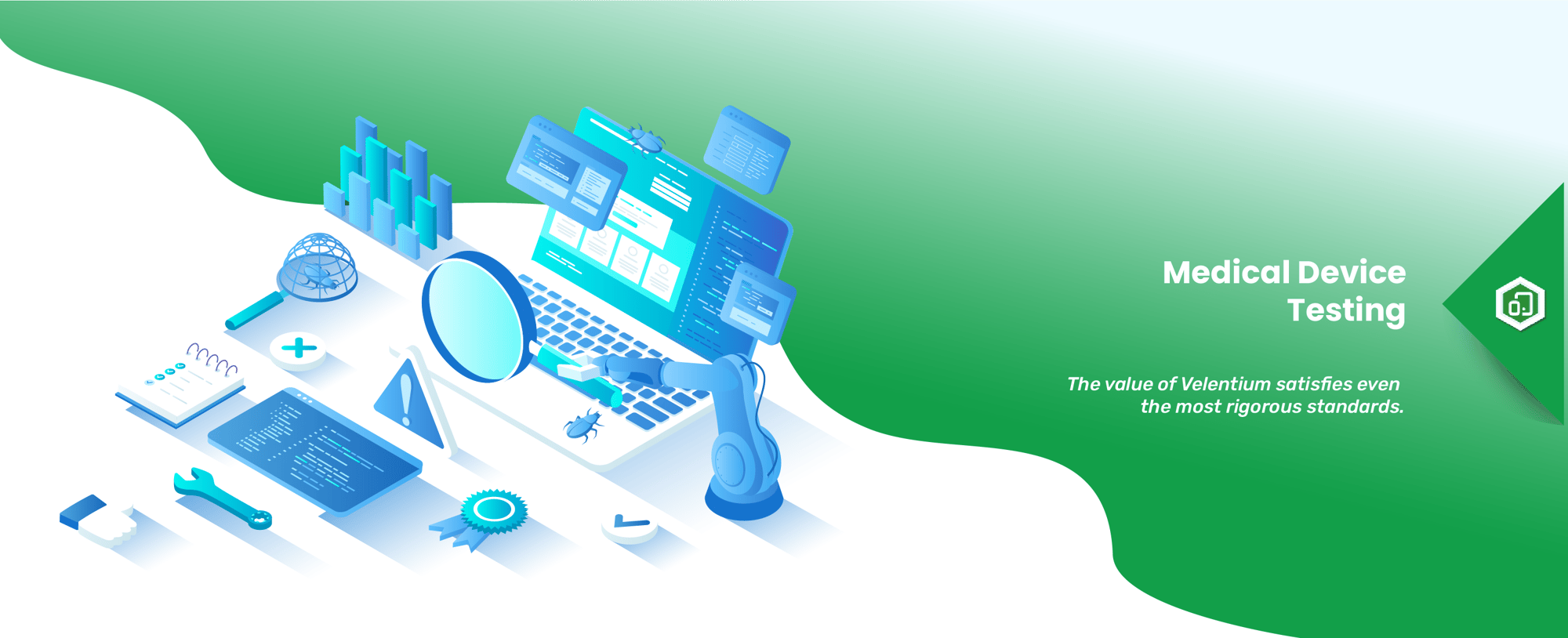
From Concept to Commercialization
Medical Device
Testing
A crucial component in medical device development is constantly assuring the highest quality. We do that through consistent and efficient implementation and testing. While Velentium is an industry leader in the entire device development process, we also employ a proven, platform-based, modular test system design to satisfy the unique needs of our clients.
How to Test Medical Devices
Due to our extensive experience in medtech development, we are keenly familiar with medical device testing requirements and processes. Velentium formulates test plans unique to each project’s needs, creating automated test systems that scale alongside development phases and right into manufacturing to confirm dependable, efficient device performance.
Medical devices exist as solutions to complex biomedical problems, so no design evaluation is complete without taking biocompatibility into account. In the phase solely devoted to testing your developed concept, both internal and outsourced integration methods are used to mimic real-life systems, ensuring device efficacy and safety.
Ensuring that your device will perform as intended in relation to the human body is paramount in this phase.
Human Factors Engineering
Human Factors Engineering includes validation testing, usability testing, and formative/summative testing. This process continually identifies and evaluates the risks and vulnerabilities of possible user error, encompassing all possible user interactions. If it is something that a major or minor user sees, hears, or touches regarding the device, it is included.
It is crucial to include human factors from the concept phase and throughout development, as it is much more time- and cost-effective to modify design and software early than risking testing failures, regulatory delays, or poor market performance later.
Medical Device Software Testing
Accurately testing your device’s software involves several factors, and Velentium leads the industry in quality and compliance testing practices. Aligning the designed software with a medical device’s intended use, verifying and validating its design requirements, and ensuring its efficacy are just the beginning.
Testing needs are determined in the design phase, so when your device is ready for the dedicated testing phase, we have already established and begun maintaining traceability in the device’s Design History File.
Static Analysis
Static analysis tests coded software without executing it. This is performed on a rolling basis throughout development to ensure that your device’s software continuously meets standards for safety, security, reliability, maintainability, and portability. While static analysis has its limitations, it is a firm foundation on which to build out your device’s software testing phase.
Adhering to established coding standards also ensures ISO compliance and consistent code quality, while reducing time-to-market costs and, eventually, postmarket support costs. It ensures that your device will be maintainable, even when the engineers who wrote its original software are no longer available for future work.
Dynamic Analysis
Dynamic analysis is performed as the software is executed. There are several types of dynamic analysis, and each assesses elements of your device’s software to ensure they are free of faults and accomplish their intended use.
- Unit Testing
A unit is software’s smallest testable component. Unit testing must be done before any integrations to ensure that isolated components function. Unit testing also confirms findings from static analysis. - Integration Testing
Integration testing is performed on grouped units called modules. Stressors are introduced, ensuring that each unit functions properly in relation to its module’s intended purpose. Integration testing seeks to answer the question, “What could go wrong?” - System Testing
Once your software has been successfully integrated and tested, strategic, external stimuli are introduced to evaluate the system’s response to various real-world scenarios. - Micro-Penetration Testing
Penetration testing involves performing “attacks” on device software to uncover cybersecurity vulnerabilities. Historically, penetration testing was performed at the end of the development process. While this timing may satisfy FDA and other regulatory and standards requirements, it is too late for any vulnerabilities found to be addressed in a timely, cost-effective way. That’s why we’ve pioneered a new approach to penetration testing, called micro-penetration testing. This methodology provides timely feedback on your device’s software upon implementation, protecting your project’s timeline and budget.
Design Verification and Validation
As testing proves your developing concept operational, we consistently revisit its original intent and preliminary assessments to determine the answers to the most pressing questions:
1. Did we do it according to plan?
2. Did we do it right?
3. Did we do enough? Was our plan sufficient?
According to the FDA, verification is “objective evidence that specified requirements have been fulfilled.” In other words, proof that your project’s input (Design Controls) matches its output (the results; the finished product).
Complementing verification, validation is “objective evidence that the particular requirements for a specific intended use can be consistently fulfilled.” In other words, will it serve the end users the way you originally planned?
Velentium’s subject matter experts holistically answer these questions, adhering to medical device development industry standards from the onset of your project. In fact, not only do we follow these standards, we helped write them!
Our SMEs consult with public-private partnerships, special interest groups, regulatory bodies, and standards organizations to shape the future of medtech. We adhere to regulations and standards intelligently, thoroughly, and efficiently.
The value of Velentium satisfies even the most rigorous standards.
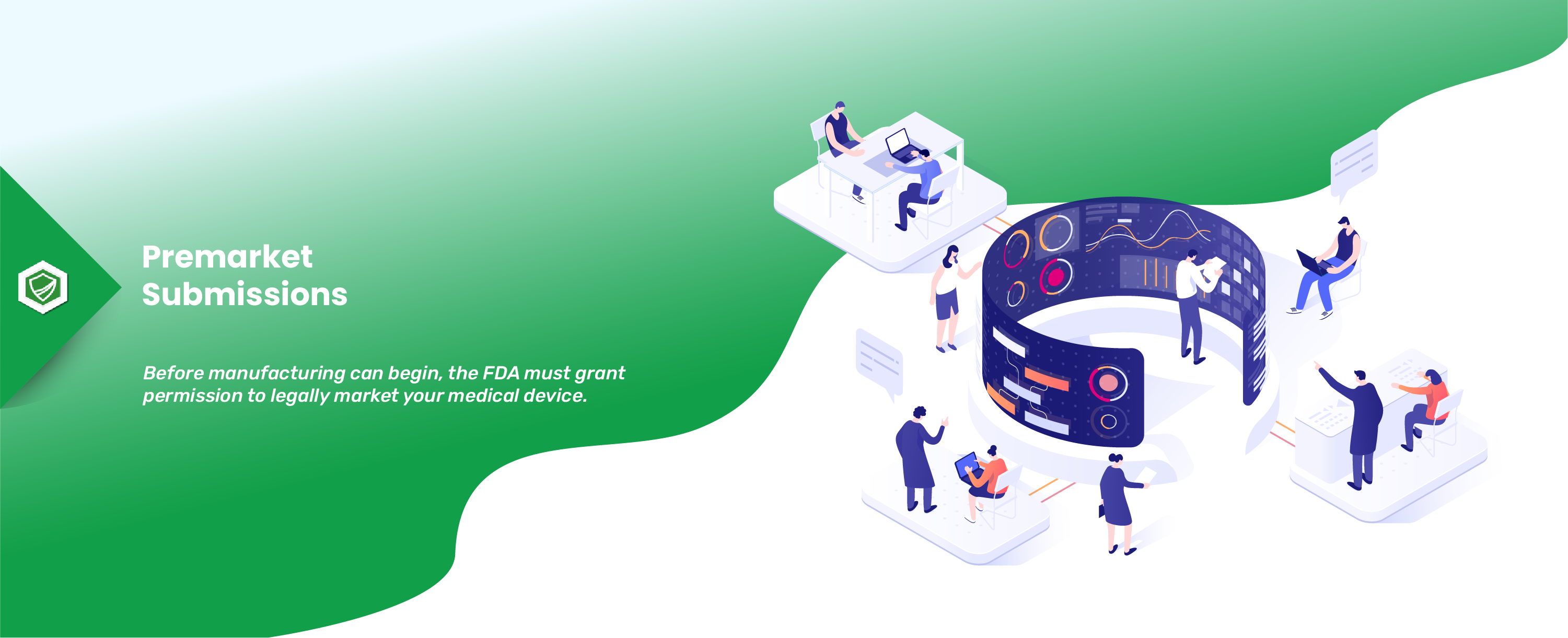
From Concept to Commercialization
Premarket
Submissions
Before manufacturing can begin, the FDA must grant permission to legally market your medical device.
While there are a few different types of submissions to obtain FDA approval, the two most common are Premarket Notification, or 510(k), and Premarket Approval (PMA).
Submitting for premarket notification means you must “demonstrate that the device to be marketed is as safe and effective, that is, substantially equivalent (SE), to a legally marketed device.” In other words, this device’s supporting documentation seeks to prove that it is comparable to an already-marketed predicate.
FDA Premarket Approval (PMA), on the other hand, is the “scientific and regulatory review to evaluate the safety and effectiveness of [new] Class III medical devices.” Submissions, in this case, must include detailed accounts of hazard analyses, risk identification, and mitigation. FDA premarket approval must also include instructions, specifications, and strategy outlines for software updates and maintaining device integrity.
In either case, cleared applications serve as official licenses to market medical devices.
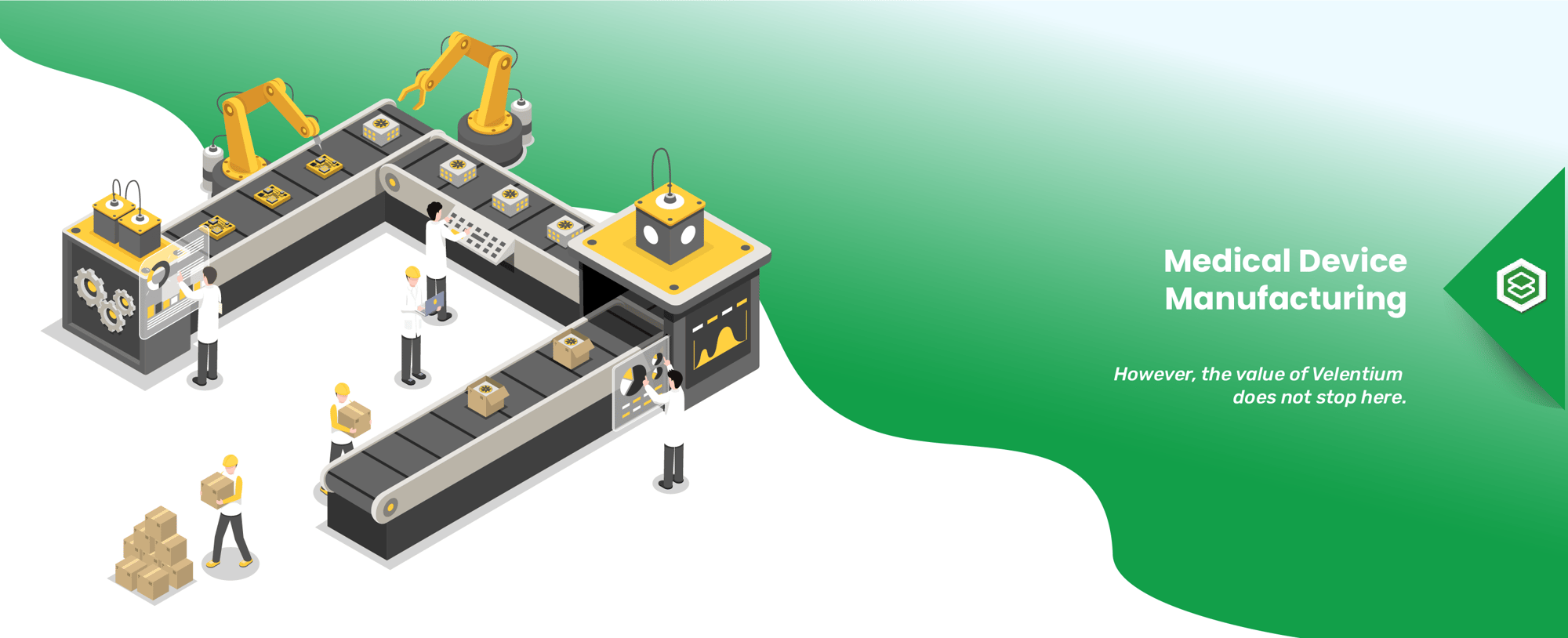
From Concept to Commercialization
Medical Device
Manufacturing
Once your developed, tested, verified, and approved design is transferred to the manufacturing phase, it’s ready at last to become a marketed medical device that changes lives. At this stage, corrections and reiterations are highly undesirable, jeopardizing your project’s timeline and requiring considerably more money to rectify.
It’s at this juncture that the value of Velentium has proven immeasurable.
We have conducted extensive research, human factors validation, compliance assessments, design verification, and testing. We have involved several Subject Matter Experts throughout the development lifecycle to ensure that your project satisfies both your standards and those set forth through regulatory bodies.
Most importantly, together, we completed your design and prepared your device to be securely, safely manufactured, and distributed to the people who need it most.
However, the value of Velentium does not stop here.
From Concept to Commercialization
Medical Device
Commercialization and Results, Revisited
We covered the value of Velentium’s holistic, forward-thinking approach at the beginning of this playbook, and then highlighted how we realize that value through our proven medical device development process. This approach is crucial to the safe, secure, successful development, commercialization, postmarket, and end-of-life phases for your medical device.
By the time your device is commercialized, you, your team, and your financial backers have invested considerable time, energy, and finances into making your concept a life-changing reality. Subjecting your project to risks from regulatory denial or delay, testing failures, cybersecurity vulnerabilities, or an uncertain future in the postmarket and end-of-life phases would be a devastating oversight.
Velentium has a plan for that. We are the industry leader in secure device development, and as you’ve read, it is more than just a “phase” in our process. It is our process.

